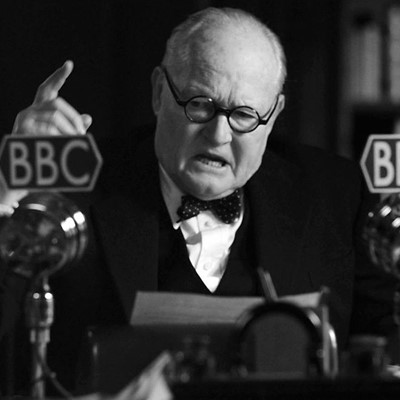
"I've learned that people will forget what you said, people will forget what you did, but people will never forget how you made them feel."
– Maya Angelou
Appealing to audience emotion is usually a goal whenever you're working on a speech. Most of us take that Maya Angelou quote to heart: Audiences will remember how we make them feel.
What happens, though, when we tell a heartfelt story and lose control of our own emotions? More specifically, how should we approach telling a story in a speech if we think we’ll get choked up, or worse, cry our eyes out?
'I wasn't planning to cry'
This happens more frequently than you might think, particularly when workshopping speeches and presentations. Recently, we were helping an emergency room director with a presentation on the impact COVID-19 has had on her hospital. Her stories were compelling.
As she described how patients had died with only a member of her nursing staff to hold their hand, you could hear her voice waiver. As she tried to press on, bringing in details of her personal experiences, she began to cry. She had to stop speaking.
What happened? A combination of things, probably. First, the material was real and the experiences were traumatic and tragic. There was every reason to cry.
Then, add in the pressure and typical nerves of standing in front of a room. Those take away resources we might otherwise use to control our emotions.
The result was that she couldn't complete her message—and the audience's focus shifted from what she was talking about to their concern for her.
What can a speaker do?
After our group passed around a box of tissues, we discussed: How should a speaker handle a story like this? Based on our experience coaching speakers at The Buckley School, here are a few thoughts:
1. Test out your story before you stand up and tell it.
Practice is always valuable—and so important if your material is emotional. Yet, we find that people cling to the misconception that they won't seem genuine if they practice. We urge you to leave this thinking behind.
Tell your emotional story out loud to yourself and see how it goes. If you can deliver it without crying, next try it on a couple of friends or colleagues. Test drive it with a small audience where the stakes are low and your nerves are in check. If all that goes well, you'll feel better about standing up in front of a large group and sharing an emotional story.
2. Determine if there are details or moments that trigger emotion—and avoid them.
As you practice your story, notice if there's a moment that becomes difficult for you. Maybe it's a detail, how you phrase something, or the memory those bring forward. See if you can restructure your story to avoid that moment or detail. You might even try writing your story out word-for-word or recording it, so that you can pinpoint the trigger.
Another way to look at this is to see how close you can get to the heart of the story without losing your control. There are dozens of ways to tell a story, so work out the best way to tell yours. See if you can create enough emotional distance from the story to make your way through.
3. If you can't tell the story without breaking down, don't tell it.
Sometimes, people are surprised to hear us give this suggestion in coaching. We've all been advised to make ourselves vulnerable, to be authentic. But if you find you can't tell your story without risking an emotional breakdown, don't tell it.*
It might help to consider why you tell any story and why you feel compelled to tell this one.
When you cry in front of an audience, you shift the attention away from the message and onto you. And when you do that, you're actually working against your true goal—to be the servant of your message.
*There are always exceptions--and we think about a recent speech by basketball player A'ja Wilson and the story she told about her grandmother. The point was important and her tears didn't take away from that.
But what about taking a deep breath?
Other speakers have shared tips on how to stem emotion in the moment, such as taking a deep breath or collecting yourself by breaking eye contact with the audience. These tips may be useful when you're caught off guard by your emotions—and that can happen.
But when it comes to a planned presentation that includes an emotional story, you should take every opportunity to prepare so that you avoid choking up and crying. You don't owe a public breakdown to your speech or your audience. And your anguish makes people uncomfortable even if they understand and sympathize.






